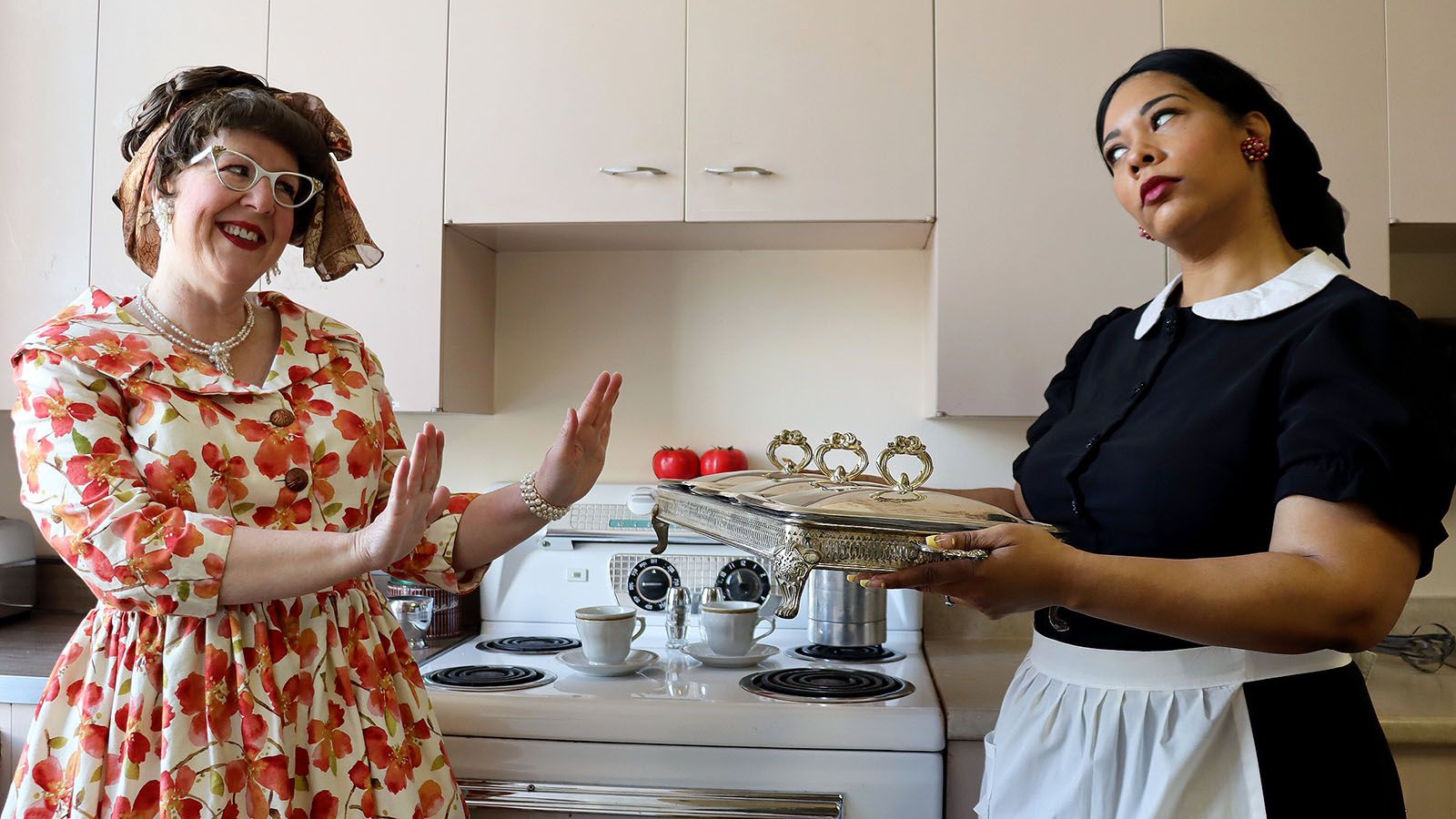To cap its 2022-2023 season, First Presbyterian Theater is presenting the Pulitzer Prize- and Tony Award-winning play Clybourne Park, a satirical look at the transcendent politics surrounding race and the gentrification of a bungalow on the northwest side of Chicago.
The First Pres production opens Friday, May 12, and runs two weekends through Sunday, May 21.
“I can see Fort Wayne in this show,” said Todd Sandman-Cruz, director of Fine and Performing Arts at First Pres. “After being gone for a long time, I see it. The neighborhoods are changing and have changed so much in the number of years that I’ve been gone. The historic district prices and everyone looking to be a part of what’s going on downtown at Electric Works. Fort Wayne is being gentrified.”
Confronting real issues
Race is integral to Clybourne Park.
Sandman-Cruz and first-time director Prentis Moore agreed that audiences should come in ready to have a conversation. Moore suggests audiences “take a minute to identify the racial issues from 2009, when Act 2 takes place, that still exist now almost 20 years out. The show is super funny, but the audience really needs to pay attention to how they fit in, and don’t be afraid to be uncomfortable.”
“The show is like looking in the mirror and laughing at yourself while getting slapped in the face,” Sandman-Cruz added. “It makes you take a hard look.”
Setting up the story
In Clybourne Park, playwright Bruce Norris embraces the passage of time by setting each of the two acts in a different era, the first in 1959 and the second in 2009.
In 1959 we meet Karl, a character first introduced in Lorraine Hainsberry’s 1959 play A Raisin in the Sun, as a white man who attempts to buy out a Black family, the Youngers, in order to prevent them from moving into his white middle class neighborhood.
Karl and his deaf, pregnant wife, Betsy, and a local pastor, Jim, come to inform their neighbors, the grieving Bev and Russ, that the people who are buying their home are Black, and try to dissuade them from making the sale. Both couples eventually ask the opinions of Francine, who is Russ and Bev’s Black housekeeper, and her husband, Albert.
In 2009, a white couple, Steve and Lindsay, are attempting to purchase the same bungalow with intentions to tear it down and build a bigger, more modern home. The neighborhood has become predominantly Black, and Kevin and Lena, a Black couple descended from A Raisin in the Sun’s Younger family and members of the housing board, refuse to allow the house to be torn down.
Each couple has employed a lawyer. Over the course of the passive-aggressive real estate struggle the intensity grows. Meanwhile, a trunk belonging to Russ and Bev’s son, who died by suicide prior to the events in Act 1, is discovered.
More than a house
Sandman-Cruz is confident that the audience will connect to both eras.
“I think there’s something everyone can see in the characters in 2009, since it’s recent, but also in 1959,” he said. “Big changes happened in both, but there are also some more subtle feelings that kind of sneak up and make you examine yourself and ask, ‘Am I like that?’ ’’
The house that is central to the plot of this production could tell an interesting story of its own. In Act 1, we learn that Bev and Russ are selling because their son, Kenneth, died by suicide in the house.
“This house has seen tragedy” Sandman-Cruz said. “If walls could talk, I think that’s what this one would say.”
Moore sees it in a different way.
“The house is a structure, and also represents a structure,” he said. “When Kenneth dies, Russ says he just doesn’t want it anymore, not only meaning the house, and then says, ‘It’s ours, and we are entitled to give it away if we want to.’ ”
Moore mentions that in Act 2 the tables turn and the argument is whether or not to keep or destroy the house.
“It’s just property to (Steve and Lindsay),” he said. “But Kevin and Lena see the value in that history.”
Dual roles
Somewhat unique to Clybourne Park is the dual roles, as each actor plays a new character in Act 1 and 2.
“The characters each actor plays in Act 1 are polar opposites of those they have in Act 2,” Moore said. “For instance, Bev is the model 1950s housewife, submissive, like you’d expect, and then in Act 2, the same actress plays Kathy, an outspoken, glass ceiling-breaking lawyer.”
“What I think is particularly interesting for the actors is the way Norris has written their Act 2 characters to be what the Act 1 characters needed to learn,” Sandman-Cruz added.
A newcomer to the director’s chair, Moore enlisted Sandman-Cruz to help his actors to embrace their Act 1 characters.
“We had a 1950s boot camp with Todd,” Moore said. “It really helped when the actors could connect with a different posture, and really get used to even the gender politics of the time, the women especially. For them it was more extreme, like the women not being a part of the men’s discussions — so different from Act 2 when Kathy is out there leading the charge.”
Moore, who has won two Anthony Awards for his musical theater performances, reflected on this choice for his directorial debut.
“(Clybourne Park) is the piece that Fort Wayne needs,” he said. “There are just so many different levels to the issues that our community has. Being able to use theater to voice how things need to change, it starts conversations, and those conversations educate those who come after us.”





